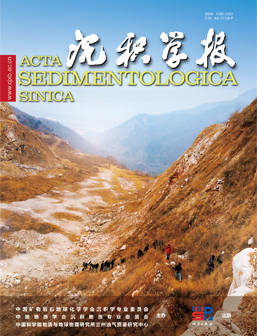The influence of source composition and flow on the morphological change of meander river based on flume sedimentation simulation experiment
doi: 10.14027/j.issn.1000-0550.2024.076
- Received Date: 2024-03-05
- Available Online: 2024-09-09
-
Key words:
- the development process of meandering rivers /
- Sink simulation experiments /
- river morphology /
- Sedimentary characteristics /
- Bank denudation
Abstract: Fluvial deposit is widely developed in natural strata, and meandering river deposit is an important part of fluvial deposit. Due to the frequent channel migration during the development of meandering river and the development of a large number of lateral deposits, the superposition relationship of sand bodies inside the point dam is complicated, so the analysis of the evolution process of meandering river has been the focus of sedimentological research. The analysis of controlling factors of meansional river morphology is of great significance to the study of paleoclimate evolution, continental weathering intensity and the exploration and development of oil and gas reservoirs. Previous scholars summarized the initial conditions for the generation of a zigzagging river by observing modern river sediments, and studied the effects of different clay mineral content, vegetation cover and initial saturation of river bed on the development of a zigzagging river. However, the development period of river sediments in nature is too long, and the dynamic sedimentation process of river cannot be well observed through field investigation and dissected outcrop, and the recording process is susceptible to interference by environmental factors. And lack of quantitative data support. In this paper, the effects of channel migration and dam body development on meander river development under single factor conditions were studied through flume sedimentation simulation experiments. In this study, three sets of experiments under different particle size, flow and clay mineral content were set up, and high-precision 3D laser scanner was used to convert the data into an elevation model for quantitative study of profile structure and bed sediment changes. The experimental results show that: (1) the particle size of the source sand directly affects the curvature of the meander river. Under the condition of constant clay content and constant flow, the smaller the particle size of the sand, the greater the curvature of the meander river formed. There are obvious differences in the structure of bank collapse sand bodies under different particle size conditions; (2) When the discharge affects the sediment transport balance and the flow impact force on the riverbank during the development of meandering river, when the sediment input rate and transport rate are in dynamic equilibrium, the riverbank maintains outward expansion and erosion, and the channel develops into meandering river form; (3) The addition of clay minerals to river banks can improve the permeability resistance of river banks. Under the condition that the source sand grain size and flow rate remain unchanged, the higher the clay mineral content, the lower the width to depth ratio of river channels.
| Citation: | The influence of source composition and flow on the morphological change of meander river based on flume sedimentation simulation experiment[J]. Acta Sedimentologica Sinica. doi: 10.14027/j.issn.1000-0550.2024.076 |






 DownLoad:
DownLoad: